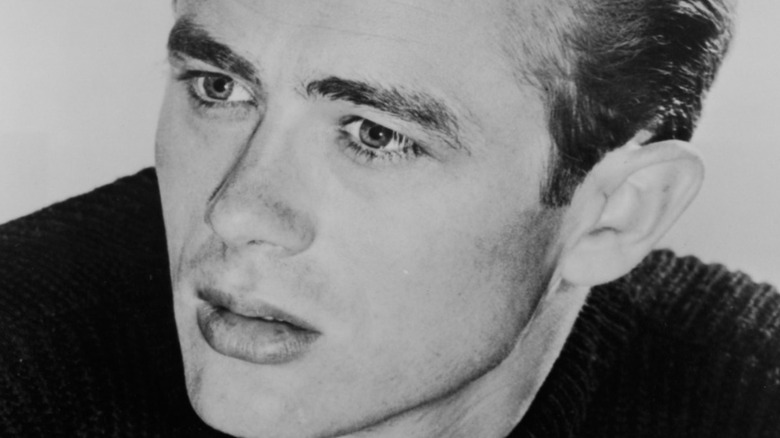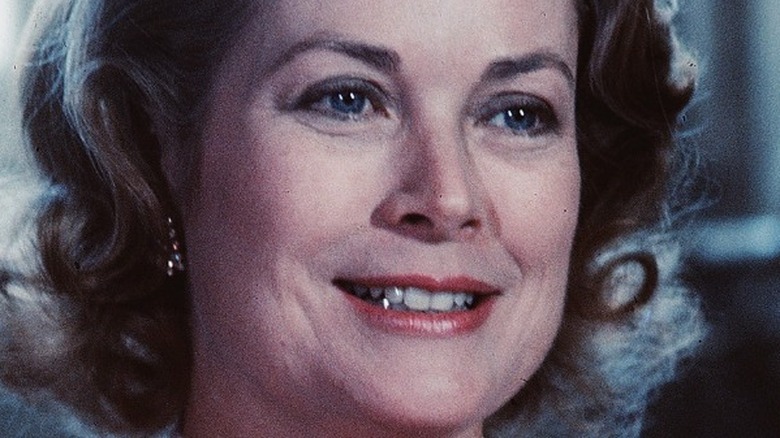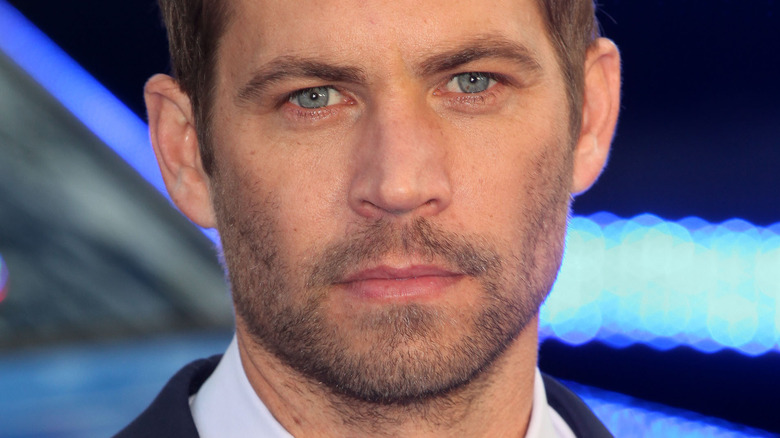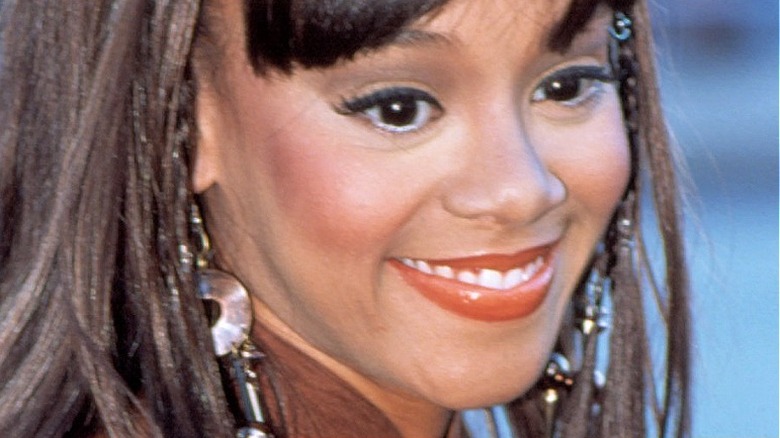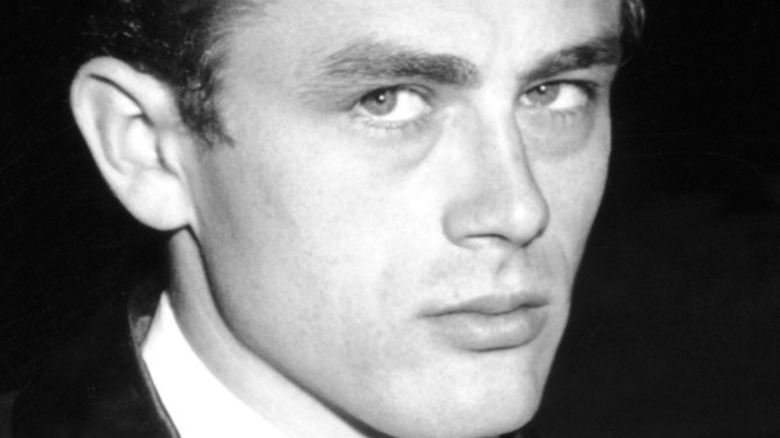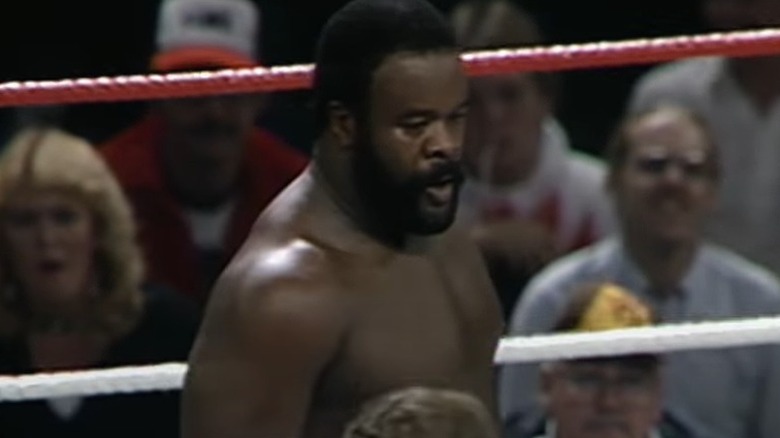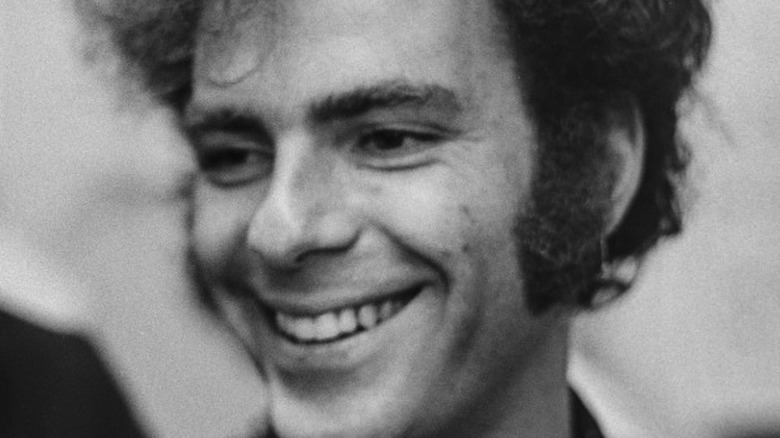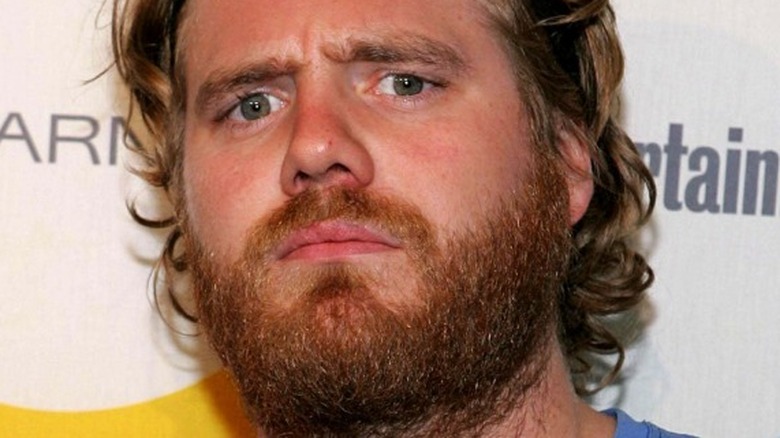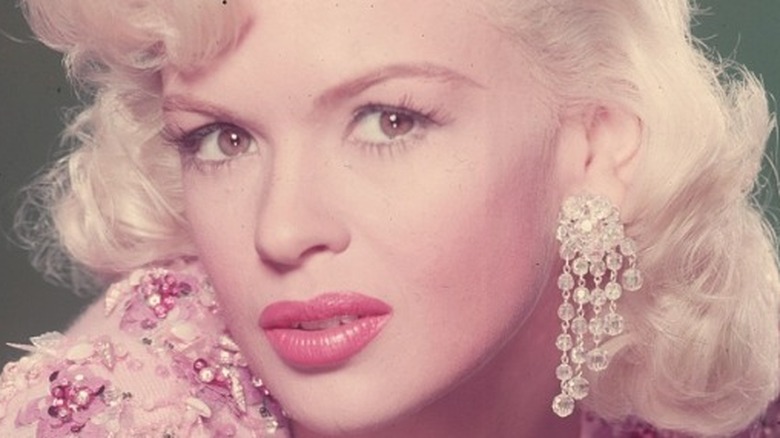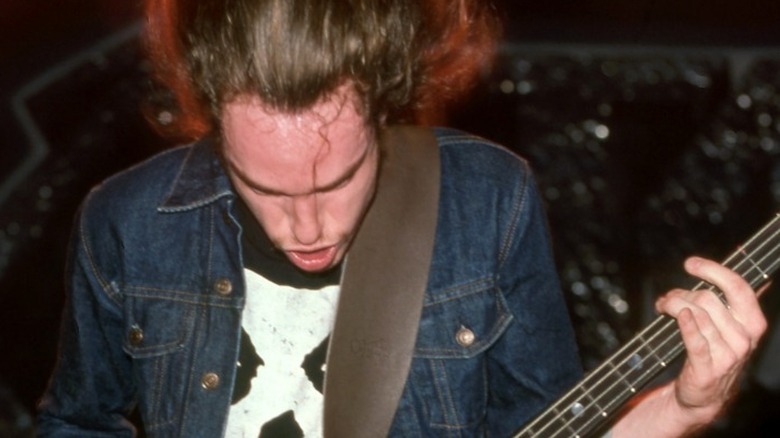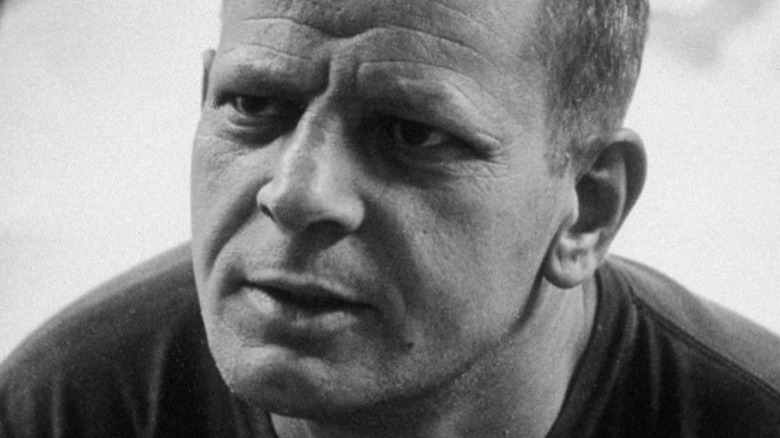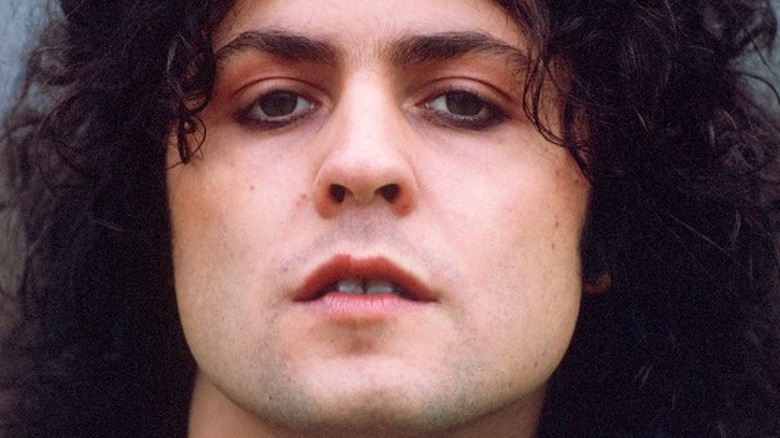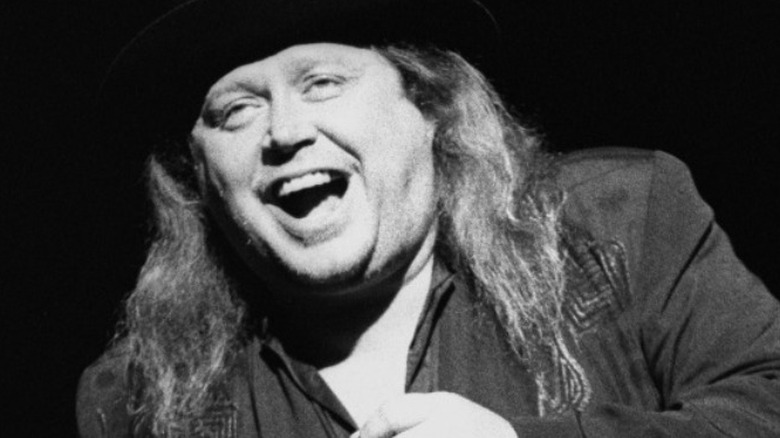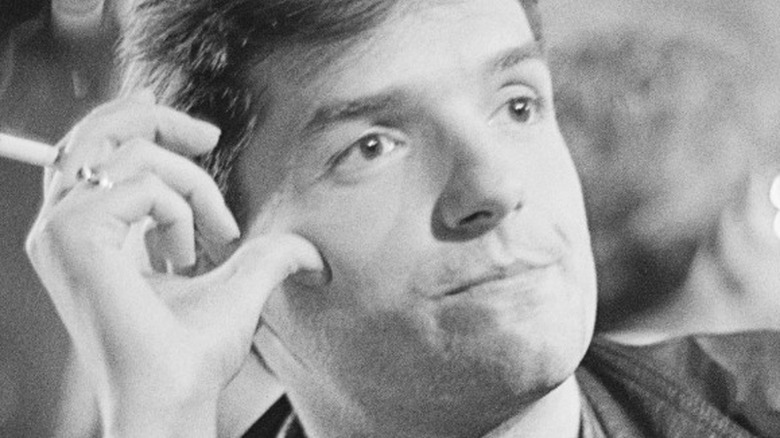Famous People Killed In Car Crashes
The death of actor and comedian Leslie Jordan made headlines on October 24, 2022, when it was reported that the BMW he was driving collided with a building in Los Angeles (per CNN). The 67-year-old was most well-known for his recurring role in the hit TV show "Will & Grace" and his various characters on the FX horror anthology series "American Horror Story." During the Covid-19 pandemic, Jordan became a sensation on Instagram, entertaining the masses with his hilarious quips and songs.
Jordan is the latest in a long line of celebrities that have met their tragic ends from auto accidents. These often avoidable crashes have taken the lives of the young and the old, devastating fans across all genres of music, film, and fine art.
Though Jordan's death has not been attributed to reckless driving or driving under the influence, you'll find that many on this list would still be alive today if they had buckled up, driven responsibly, or had not overindulged before getting behind the wheel. And some you're about to read about were involved in crashes that happened while they weren't the ones driving, showing that your life is sometimes in the hands of people who should be more careful.
Grace Kelly
Grace Kelly was only 52 years old when her car veered off a roadway in the mountains of Monaco near Monte Carlo. The former Hollywood star made her film debut in the 1951 film "Fourteen Hours," after appearing on several TV shows beginning in 1950 (via IMDb). She quickly became an in-demand starlet, cast in 1952's "High Noon" with Gary Cooper. Legendary film director Alfred Hitchcock made note of Kelly's talent and had her cast in his films "Dial M for Murder" (1954), "Rear Window" (1954), and "To Catch a Thief" (1955).
Kelly wasn't long for Hollywood life, however. She left the movie scene shortly after the release of her final film, "High Society" (1956). She married Prince Rainier III of Monaco, whom she had met several years earlier at the Cannes Film Festival (via History). Now known as Princess Grace, she left her Hollywood life behind her and moved with her new husband to his home country.
On September 13, 1982, Grace was driving with her 17-year-old daughter Stephanie when the princess suffered a stroke and lost control of her car. Stephanie survived her injuries, but Princess Grace died the following day at a local hospital.
Paul Walker
Paul Walker began a lifelong career in front of the camera when he was a toddler, appearing in a diaper commercial. After making several small screen appearances on TV shows that included "Touched by an Angel" and the daytime soap "The Young and the Restless," Walker, at last, broke through with a memorable role in the 1999 MTV film "Varsity Blues" (per IMDb). His star was quickly rising, and he was cast in feature films "The Skulls," "Brokedown Palace," and "She's All That," before landing the role he will forever be known for, Brian O'Conner in the hugely successful film franchise "The Fast and the Furious." Walker was set to star in another sequel to the series of films when he was killed in a horrific car crash on November 30, 2013 (via BBC).
Walker was a passenger in a 2005 Porsche Carrera GT, driven by his friend, 30-year-old Roger Rodas. The two had just left an event for Walker's charity, Reach Out Worldwide, when Rodas lost control of his vehicle. CNN reports the fiery crash that ensued killed both Walker and Rodas, with Walker's death being attributed to both the trauma from the wreck and from the fire that erupted a minute afterward.
Lisa Lopes
Grammy Award-winning artist Lisa "Left Eye" Lopes gained fame as part of R&B sensation TLC. Beginning in 1991, the group utilized Lopes' uncanny rapping skills, pairing them with the vocal stylings of Rozonda Thomas and Tionne Watkins. Topping the Billboard charts and winning multiple awards weren't the only things keeping the band in the headlines, however. Lopes' off-stage behavior was the stuff of legend, culminating in her 1994 arrest for arson. The charges stemmed from her setting the mansion she shared with former NFL player Andre Rison ablaze, earning Lopes a sentence to a halfway house and lengthy probation (via Paper).
Lopes was killed on April 25, 2002, when the van she was driving in was involved in a head-on collision on a country road in Honduras. CNN reports that Lopes was in the Latin American country on vacation, a spot where she regularly went to relax. In the van with Lopes were seven other passengers, including three members of the band Egypt. TLC's manager, Bill Diggins, told the media outlet that Lopes was killed instantly, and was the only one who died in the tragic accident. Lopes was just shy of her 31st birthday.
James Dean
Along with the likes of Marilyn Monroe and Elvis Presley, actor James Dean is regarded as one of the '50s icons that still has public appeal some 70 years after the decade began. After more than a dozen TV appearances in the early part of the decade, Dean broke through and achieved stardom after being cast in the 1955 film "East of Eden." This led to his starring role in the film "Rebel Without a Cause," released later that year (via IMDb). With fame now in his grasp, the 24-year-old actor would have a short amount of time to revel in his glory before dying in an accident that cut short what might have become a long career in film.
Dean had recently purchased a new Porsche Spyder before his life was taken in a car crash on September 30, 1955. Dean, who was known for driving at excessive speeds, had just been issued a speeding ticket hours before the wreck when he was driving through Bakersfield (via History). Dean's vehicle crashed into a Ford Tudor, driven by 23-year-old Donald Turnupseed. Turnupseed and Dean's passenger, Rolf Wütherich, were both injured in the accident but survived. Turnupseed made a left turn in front of Dean's car as Dean was approaching an intersection. Accounts by eyewitnesses vary, with some maintaining that Dean wasn't speeding at the time of the crash. Arguably, the setting sun caused the silver Porsche to melt into the horizon, as per the Visalia Times Delta, making it difficult for Turnupseed to see Dean's Porsche.
Junkyard Dog
The world of professional wrestling has been rocked by tragedies just like every other sport. But for many kids who grew up watching classic WWE during the 1980s, the death of superstar Junkyard Dog was one that really hit home. In the ring, clad with red tights and white boots, Junkyard Dog wore a signature dog collar around his neck with a heavy chain attached to it. His antics in the ring and his powerful moves made him a fan favorite for the better part of the decade. His signature "Thump" move worked fans into a frenzy, as did his famous head butts.
By 1998, he was beyond his wrestling prime but still competed in smaller matches in several southern states. He was working full-time repossessing cars and was on the job when he died on June 1, 1998. He was transporting a repossessed car when he presumably fell asleep at the wheel (per the Associated Press, via The Morning Call). The one-vehicle crash on a stretch of Mississippi highway took the life of one of wrestling's most beloved icons from the 1980s.
Jerry Rubin
The social tumult that defined the 1960s peaked in the summer of 1968 during the National Democratic Convention in Chicago. The unrest from racial injustices and the fervor that was growing against America's involvement in the Vietnam War overshadowed the political party choosing their nominee for president, as Chicago Mayor Richard Daly ordered police to break up protests that were being held in Lincoln Park (via History).
The upheaval that followed resulted in Youth International Party members Abbie Hoffman and Jerry Rubin, among others, being indicted on conspiracy charges and crossing state lines to commit a riot. Hoffman, Rubin, and six other defendants were put on trial, known as the "Chicago Seven." The eighth member, Black Panther Party member Bobby Seale, was expelled from the courtroom during the proceedings and ordered to have his own trial.
After eventually being exonerated, Rubin left the world of politics and activism and began to focus on entrepreneurship. Encyclopedia tells us that he shed his hippie appearance and became a stockbroker in 1980.
The New York Times reports that Rubin was struck and killed by a car while jaywalking in Los Angeles on November 14, 1994. He died in the hospital two weeks later on November 28.
Ryan Dunn
The hit MTV series "Jackass" made big names out of many of its cast members, including stars Johnny Knoxville, Bam Margera, Steve-O, and Wee Man. The hilarious (and sometimes painful) pranks and antics this crew filmed brought reality TV to a whole different level. One of the most popular figures on the hit series and in the subsequent "Jackass" films was bearded legend Ryan Dunn. Dunn was known to take on stunts that others on the cast would not be brave enough (or dumb enough, depending upon perspective) to do. As bulletproof as he was on the set, Dunn showed us that no one is impervious to death on June 20, 2011.
ABC News reported Dunn was traveling at a high rate of speed when his Porsche 911 GT crashed, coming to a stop in a wooded area well off the road. The vehicle was engulfed in flames, killing both Dunn and his passenger, 30-year-old Zachary Hartwell. The West Goshen Police Department released information to the media outlet that stated Dunn's blood alcohol level was .196, well over the legal limit. He was also reported to have been driving at a speed of more than 132 miles per hour.
According to CNN, Dunn was drinking before the accident at a local bar in West Chester, Pennsylvania. The bar manager confirmed Dunn had been drinking there but didn't appear to be impaired when he left. The bar is located about a mile from the crash site.
Jayne Mansfield
The blond bombshell, who some might argue lived in the shadow of the more popular Marilyn Monroe, made her film debut in the 1955 schlock film "Female Jungle" (via IMDb). Though she mostly portrayed herself as sexy and aloof, film critic Roger Ebert says that Jayne Mansfield's screen and public persona were the creation of press agents. Ebert maintained that her role was "not original," accrediting that to Mae West. Mansfield, in his view, was a carbon copy. She had numerous roles in films, playing the dumb, but sexy, blond trope until her career began to peter out in the early 1960s.
In 1967, Mansfield was working as a regular performer at a New Orleans nightclub. She left that evening in a vehicle owned by the Gus Stevens Dinner Club, driven by Ronald Harrison. History tells us that her boyfriend, Samuel Brody, was on board, along with three of Mansfield's five children. When Harrison approached, a thick fog of chemicals was being emitted from a large truck that was spraying to kill mosquitos. In the dark and probably unable to see the rear lights from the truck due to the chemical fog, Harrison slammed the vehicle into its rear, killing himself, Brody, and Mansfield. The children were all injured but survived.
Cliff Burton
Years before Metallica had achieved mainstream success, they were a lesser-known metal band from San Francisco. Their debut album "Kill 'em All" (1983) was a masterful combination of the metal and punk bands that had inspired them. Their sophomore release, "Ride the Lightning," broke the mold of metal albums of that era, while its 1986 follow-up, "Master of Puppets," showed the world that a metal band could go multi-platinum with virtually no play on corporate radio (via Britannica).
In the space between James Hetfield's gravelly and growling vocals and Kirk Hammett's screaming guitars was Cliff Burton laying on the thick with bass skills that still rank him high on the all-time bassist list from Rolling Stone. The publication noted that Burton's varied musical tastes and virtually untouchable level of talent opened the band "to a new musicality, as he added orchestral flourishes and bass virtuosity to some of their hardest-hitting songs."
Tragically, Burton did not live long enough to see Metallica grow into the metal masters that they are regarded as today. While on tour in Europe in 1986 for "Master of Puppets," the tour bus carrying the band crashed after leaving a show in Stockholm, Sweden. Metal Forces Magazine reports that Burton was ejected from the bus, which rolled on top of the musician, crushing him. He was killed instantly.
Jackson Pollock
Jackson Pollock had long struggled with addiction and other mental health issues. Brittanica reports the artist was treated for alcoholism in 1937 and had a full-on nervous breakdown the following year. He spent four months being treated in an institution. His psychiatric treatment inspired his art, being taken by the inner exploration of his own mind that was impressed upon him by analysts. His drawings, in turn, were used in various therapy sessions by two of the psychiatrists that treated him.
Abandoning the "drip method" of painting for which he was most known, Pollock began to explore other painting techniques. Though some of the works he created from 1950 on are today considered masterpieces, his showings weren't successes at the time (via Biography). Frustrated and losing money, Pollock began to slip back into drinking heavily again. Though there was a resurgence of interest in his work several years later, the pressures of success seemed to fuel his drinking more.
In 1956, his wife left him, signaling the beginning of the end. On August 11, 1956, Pollock was driving after drinking heavily and crashed his car into a tree. He was ejected, thrown some 50 feet, and landed in a tree. Pollock was said to have died instantly.
Princess Diana
Many will remember where they were on August 31, 1997, when the news was broken that Princess Diana was the passenger in a car that suffered a horrific accident. Diana was traveling in Paris with her companion Dodi Fayed and a bodyguard when their driver lost control of the car and crashed into a support column. People magazine reports their driver, Henri Paul, was speeding to evade members of the paparazzi who were pursuing Diana and Fayed with cameras in tow. Paul tried to swiftly maneuver the vehicle into a tunnel, but lost control and struck the support. The car flipped over, killing Fayed and Paul instantly. Efforts made by a medical team to keep Diana alive at a local hospital were unsuccessful. Her death was announced at 5 a.m. local time.
Diana was laid to rest a week later on September 6. According to History, during her procession to Westminster Abbey, hundreds of thousands of mourners lined up to pay their respects while her coffin was being transported. During her funeral, Sir Elton John gave a memorable performance of his song "Candle in the Wind," vaulting his 1973 hit back to the No. 1 spot on both the U.K. and U.S. Billboard charts (per Billboard). Proceeds from the sale of the single were donated to the various charities Diana advocated for during her life.
Globally, it's estimated that 2.5 billion people watched Diana's funeral (via History).
Marc Bolan
A man with a wild mane of hair and a melodic voice, Marc Bolan was the driving force behind the U.K. glam rock band T. Rex. Their 1971 album "Electric Warrior" debuted at No. 2 on the U.K. music charts before leaping to the top spot for six weeks (via uDiscoverMusic). Though the band never had a release as powerful as "Electric Warrior," they continued to record and tour until Bolan's untimely death in 1977.
Rocks Off Magazine reports that Bolan never learned to drive. His ex-wife, June Child, claimed she had tried to teach him while the two were together in the early 1970s, but the singer wasn't having it. Years later, in 1977, Bolan was the passenger in a Mini-GT, driven by his then-girlfriend Gloria Jones. Aboard was the couple's 20-month-old son, who was riding in the back seat. Jones lost control of the car in what the BBC reports was a "notorious accident blackspot." Jones' car hit a fence and a tree, breaking her jaw and killing Bolan. Their child was unharmed.
After the wreck, Jones left the U.K. for her native United States. She was later summoned to appear before the courts on charges of being unfit to drive. Jones avoided the court appearances by staying in the U.S.
Sam Kinison
Those who remember the standup comedy of the legendary Sam Kinison might be surprised to know that the bawdy and raucous comic was a traveling preacher in the 1970s. The son of a minister, Kinison pursued this passion after teenage years that were wrought with juvenile mischief. Biography tells us that Kinison left his preaching in Chicago in 1977 to pursue his dream of becoming a standup comedian. He headed to Houston, where he was soon recognized as one of the city's most well-known performers.
Known for his jokes and observations on topics that most comedians felt were taboo, Kinison became known for his trademark scream on stage. He was quickly becoming a comedic favorite, with the track "Wild Thing" from Kinison's second standup album "Have You Seen Me Lately" garnering a Grammy nomination in 1988. Off stage, Kinison was known to be a heavy drinker and drug user, his addiction taking its toll on his personal life.
Sadly, Kinison left the world before much of what he could have accomplished came to fruition. The New York Times reports Kinison was killed on April 10, 1992, when a 17-year-old behind the wheel of a truck smashed into the car Kinison was driving with his wife of only a week. Kinison was still alive after the crash, as told by his brother who had been following Kinison's car when the crash happened. He rushed to Sam's aid, to hear him say, "Why now? I don't want to die," before the comic lost consciousness (via Biography). He was 38.
Falco
Austrian pop sensation Falco (born Johann Holzel) has at least one song that has remained a staple on many '80s pop and new wave playlists.
Already known internationally, Falco made it big when his single "Rock Me Amadeus" reached No. 1 on the Billboard Hot 100 in 1986. Though this track would be the one synonymous with his name going forward, Falco was already a major success throughout Europe and Japan. His 1982 release "Der Kommissar" made the top of many European music charts that year, as many non-German speakers found themselves singing along to a hit that wasn't in their native tongue (per History). Though he never had a hit as big as "Rock Me Amadeus," Falco continued to record albums and tour, selling more than 60 million records worldwide.
CBS News reported Falco was killed after the Jeep he was driving crashed into a passenger bus. The accident happened on the afternoon of Friday, February 6, 1998. while the singer was vacationing in the Dominican Republic town of Puerto Plata. Falco was still alive after his vehicle struck the bus and was rushed to the hospital with a broken leg and head injuries. He later died after being admitted.
